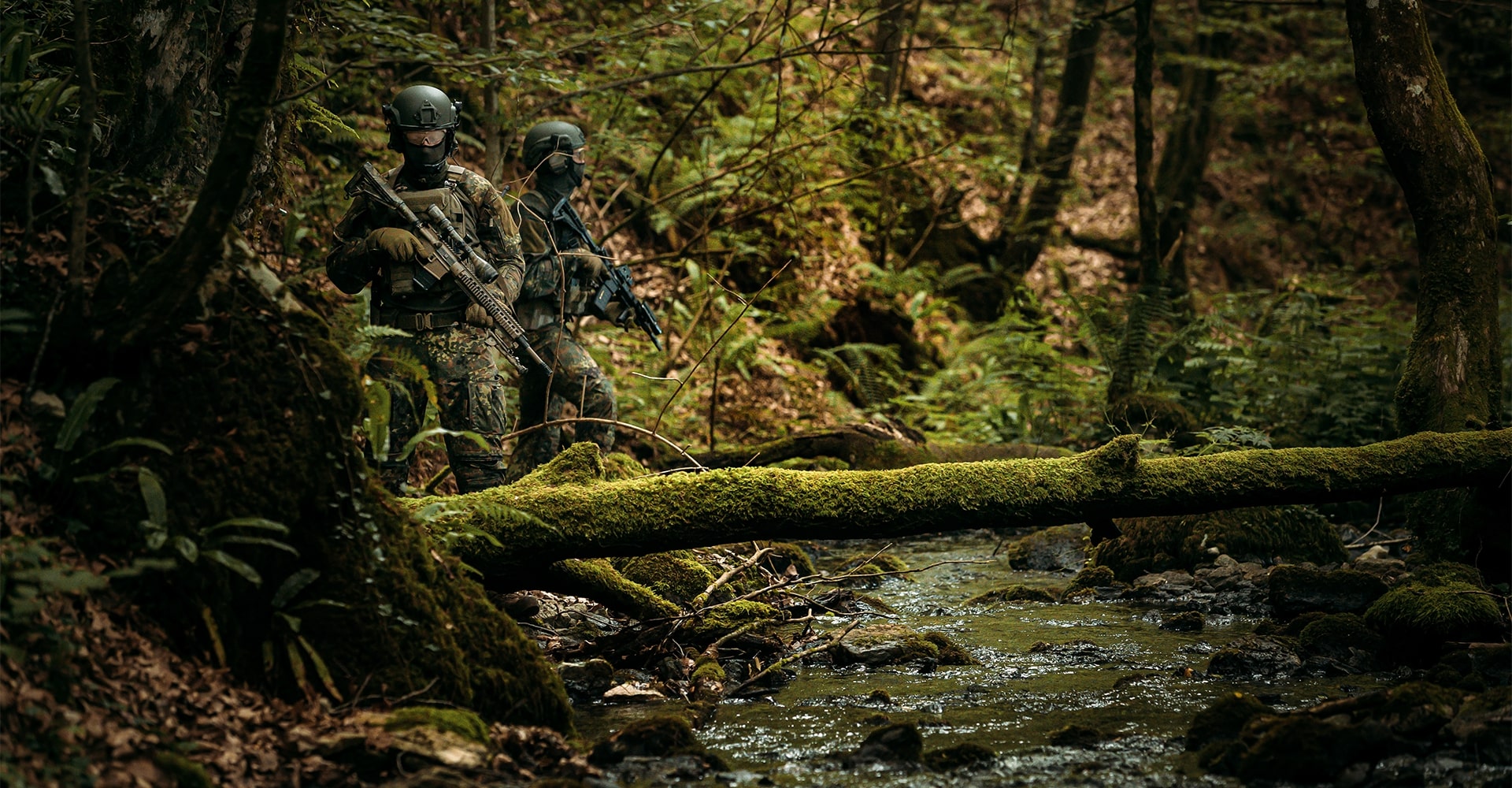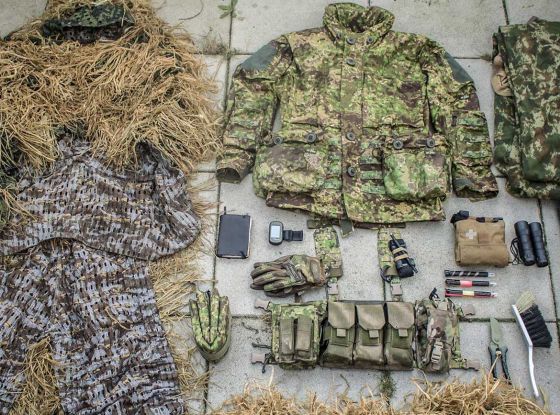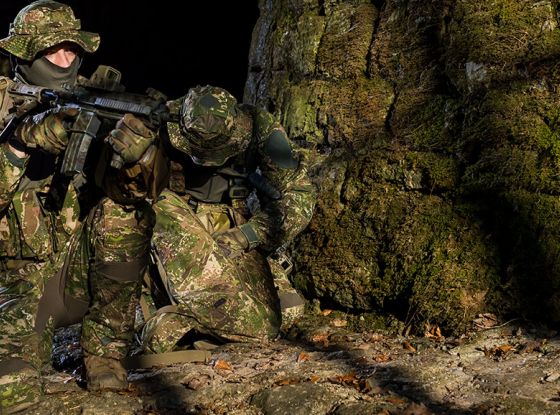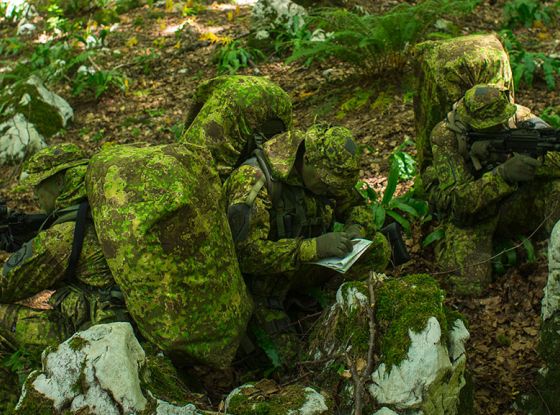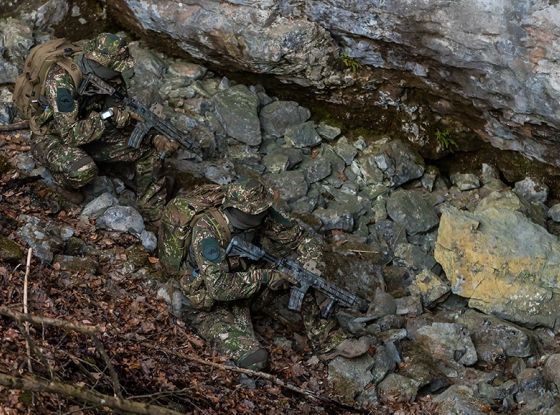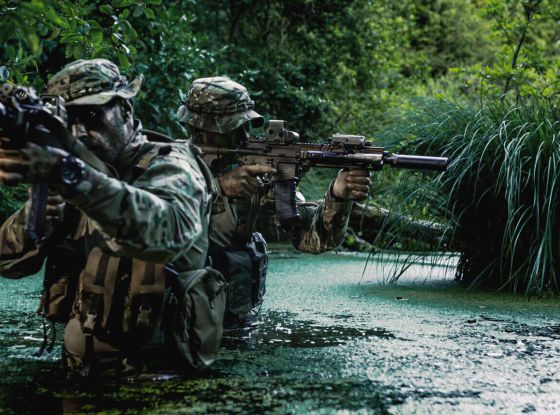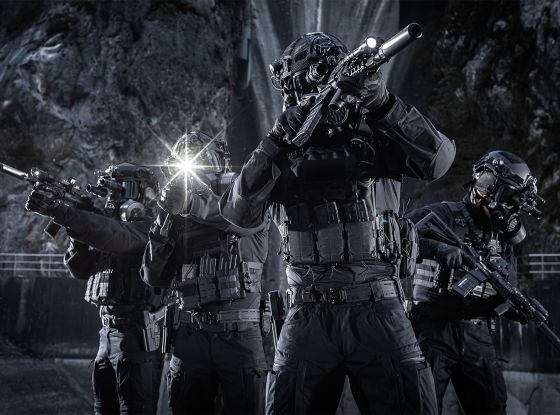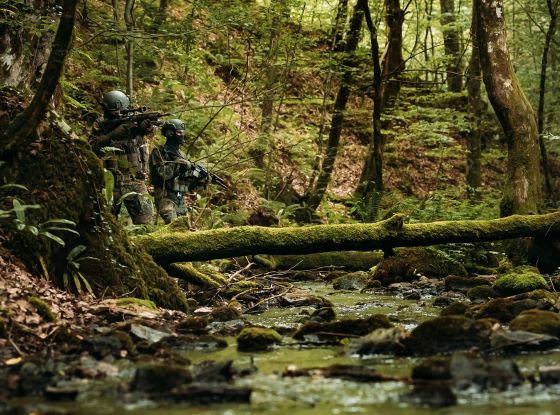We all know you love a good-looking camo gear, but camouflage is about much more than style. It’s a critical tool designed to keep you unseen in tough environments. How well your tactical camouflage works depends on how effectively it breaks up your silhouette, hides you from the human eye and advanced sensors, and adapts as you move through different terrain and lighting conditions.
In this blog post:
Choosing the right pattern and material means understanding the threats you face and picking gear built to meet them. Some camouflage works because it’s made for the realities of the field—you need to know what makes the difference.
Why is Military Camouflage More Than Just Patterns?
Military camouflage is designed for one core purpose: to keep soldiers alive by helping them go unseen. But this goes far beyond matching colors with the environment. It’s about breaking visual recognition, delaying detection, and gaining precious seconds in high-risk situations.
At its core, military camouflage is a form of deception, engineered to exploit how the human eye and brain interpret shape, contrast, and movement. A well-designed pattern doesn’t just make someone “blend in.” It actively disrupts the silhouette, making it harder for the enemy to distinguish the human form from the surrounding terrain. Whether you’re lying prone in tall grass, moving through an urban landscape, or shifting between sunlight and shadow, your camouflage needs to adapt with you.
Today’s military patterns go through rigorous development and field testing to ensure effectiveness across various distances and environments. The inclusion of macro and micro patterns, color gradients, and fractal geometry helps conceal the body from both close-range and long-range observation. Some patterns are even optimized for nighttime operations or multi-terrain versatility, reducing the need for frequent gear changes during deployments.
But it’s not just the visual pattern that matters — fabric performance plays a key role too. Materials must be durable, resistant to fading, and quiet in motion. A pattern that works perfectly in daylight means little if it reflects under infrared or degrades after exposure to UV, rain, and rough terrain.
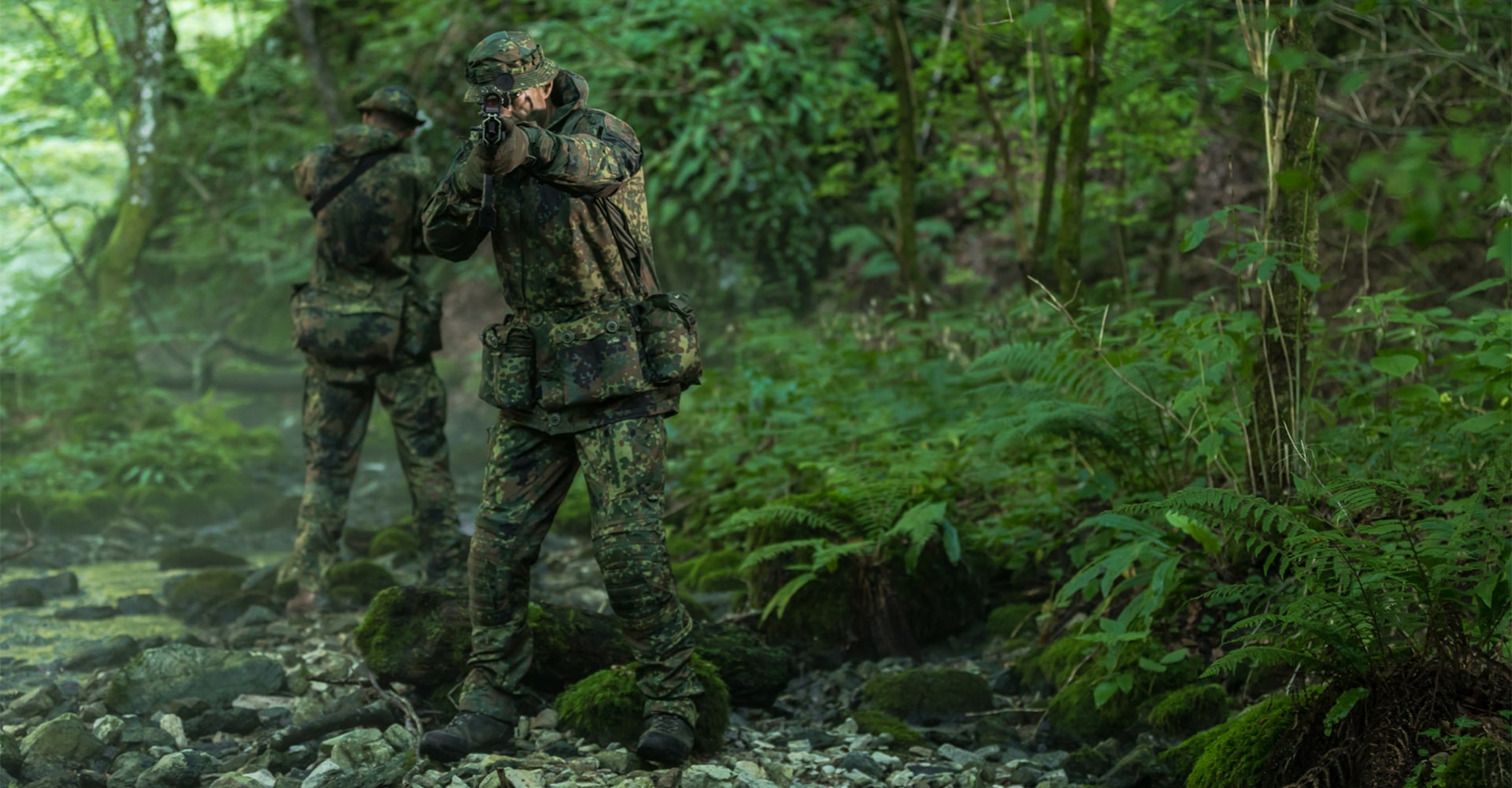
In short, military camouflage is not designed for style. It’s built as a tactical tool, refined by science, and tested in combat to ensure it performs under pressure.
For a deeper look into how these patterns are developed, read our blog: Military Camouflage: Science Behind the Patterns
Key Attributes of Military Camouflage
What makes military camouflage effective in the field? It’s a combination of visual disruption, environmental adaptability, and material engineering. Here’s what to look for:
- Macro vs. Micro Patterns: Large shapes (macro) distort the body outline at distance, while fine details (micro) confuse recognition at closer range. Both work together to disrupt perception at multiple engagement distances.
- Color Blending & Gradients: Colors are selected to match terrain types (woodland, desert, snow, urban), but more importantly, they are arranged in gradients to soften the transition between body and background.
- Fractal Geometry: Inspired by shapes found in nature, fractal-based designs help the human form disappear into chaotic environments like forests or rubble-filled urban zones.
- Fade-Resistant Materials: Tactical gear must hold its color and pattern integrity even after exposure to sun, sweat, mud, and rain. Long-term effectiveness depends on how well the pattern resists environmental wear.
- Infrared Signature Reduction: Advanced patterns are printed with dyes that minimize visibility under IR and night-vision devices, helping soldiers stay hidden from both human and machine detection.
- Noise Discipline: Camouflage fabrics are often treated or selected to reduce noise during movement, especially for close-range infiltration.
SUBSCRIBE TO UNLOCK OUR EXCLUSIVE CONTENT
Enter your email and get timely updates and relevant intel on tactical topics directly to your inbox.
You are signing up to receive updates via e-mail from which you can opt out at any time. Visit our privacy policy for more info.
Why Hunting vs. Military Camouflage Are Not Interchangeable
At first glance, hunting and military camouflage might appear similar. Both aim to conceal the human body in natural environments. But their design logic is fundamentally different. That’s because the “enemy” being avoided in each case processes the world in completely different ways.
Military camouflage is developed to counter human perception, including how we detect contrast, identify outlines, and recognize motion. Hunting camouflage, by contrast, is engineered for use against animals — creatures whose visual systems and survival instincts operate on entirely different principles.
For example, many prey animals don’t see the full range of color that humans do. Deer, for instance, are less sensitive to red and orange hues but extremely responsive to movement and scent. As a result, hunting camo often uses highly realistic prints of trees, leaves, and bark to create the illusion of stillness and blend seamlessly into forest or field environments. It’s designed to work best when the wearer is stationary and silent.
Military operations, on the other hand, demand camouflage that remains effective during movement, in urban zones, and across changing terrain. Soldiers can’t rely on stillness or scent masking to stay undetected — they need patterns that break up the human silhouette under various light conditions and viewing angles, even when shifting between cover or engaging in combat.
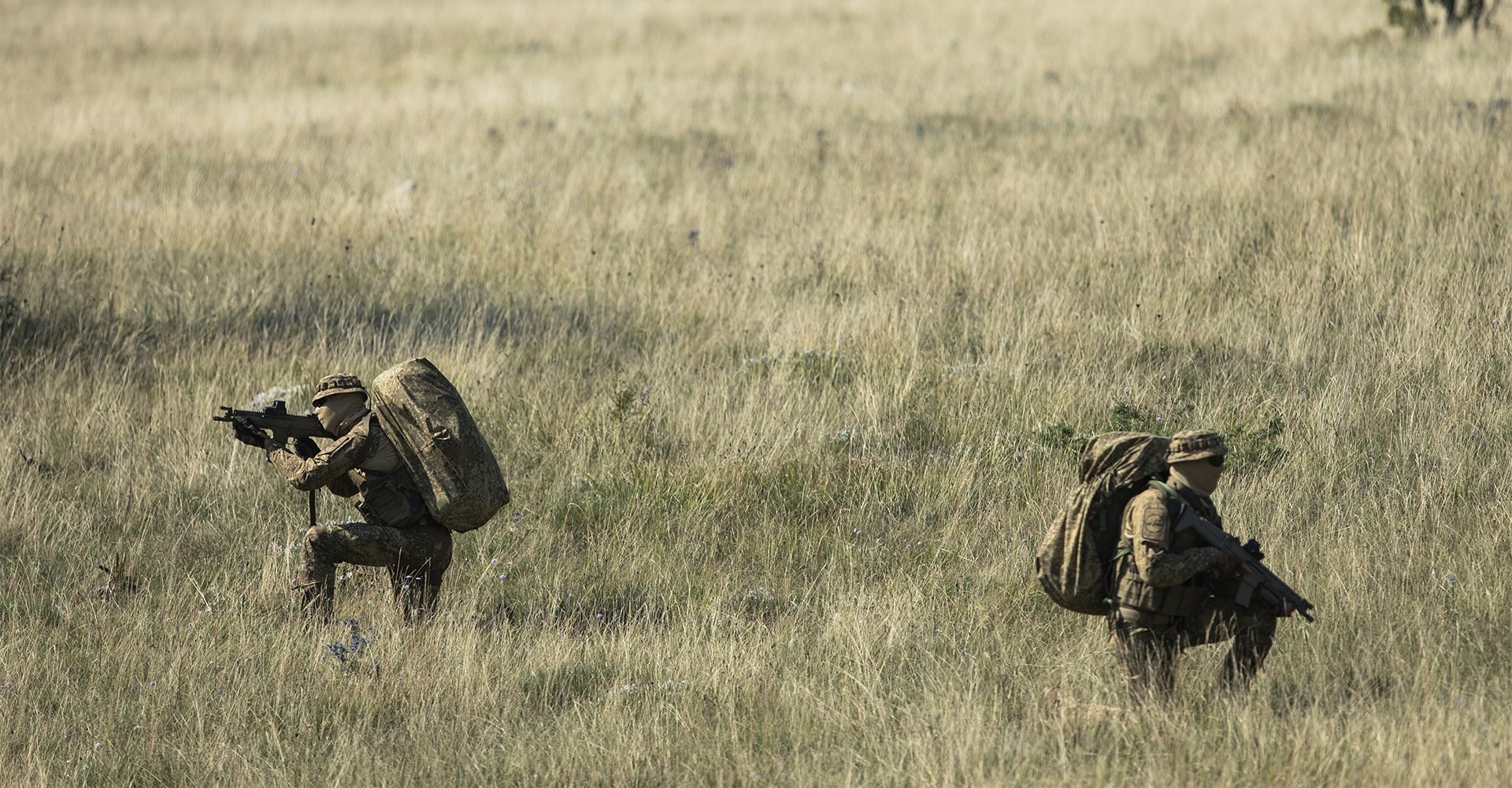
In short, hunting camouflage is built for stealth against animals, while military camouflage is optimized for survival against humans trained to look for threats. That difference makes the two systems fundamentally non-interchangeable.
Want to dive deeper into how these two types of camouflage compare? Read our full article on Hunting vs. Military Camouflage: What’s the Difference?
What Are The Key Differences?
- Visual Target: Hunting camo is tailored for the eyesight and behavior of animals, while military camo is designed to counteract human observation techniques and sensor-based detection.
- Pattern Style: Hunting camouflage often uses photo-realistic prints that mimic natural vegetation to create an illusion of stillness. Military camo, on the other hand, employs abstract and disruptive shapes to distort form and motion.
- Tactical Movement: Hunting gear assumes the wearer is mostly stationary. Military gear must function during active movement, across varying environments and terrain.
- Color Priorities: The color schemes in hunting camo cater to how animals interpret contrast, often including elements that would stand out to the human eye. Military camo avoids high-contrast features and instead prioritizes tones that blend across distances and light levels.
The Next Layer of Concealment: Defeating Thermal and IR Detection
Traditional tactical camouflage may fool the naked eye, but modern battlefields require more. Thermal imaging, night vision, and infrared sensors can reveal hidden operators in seconds — no matter how well they blend visually.
Thermal camouflage focuses on reducing or masking the body’s heat signature, invisible to human eyes but bright on infrared scans. Without it, even the best visual patterns fail.
Tactical gear combats thermal detection through:
- Insulating base layers that trap heat and reduce thermal leakage.
- Thermal cloaks and over-garments that scatter or absorb infrared radiation.
- Heat-dispersing materials and coatings balancing emitted heat with the environment.
- Targeted concealment over high-heat zones like the head, chest, and back.
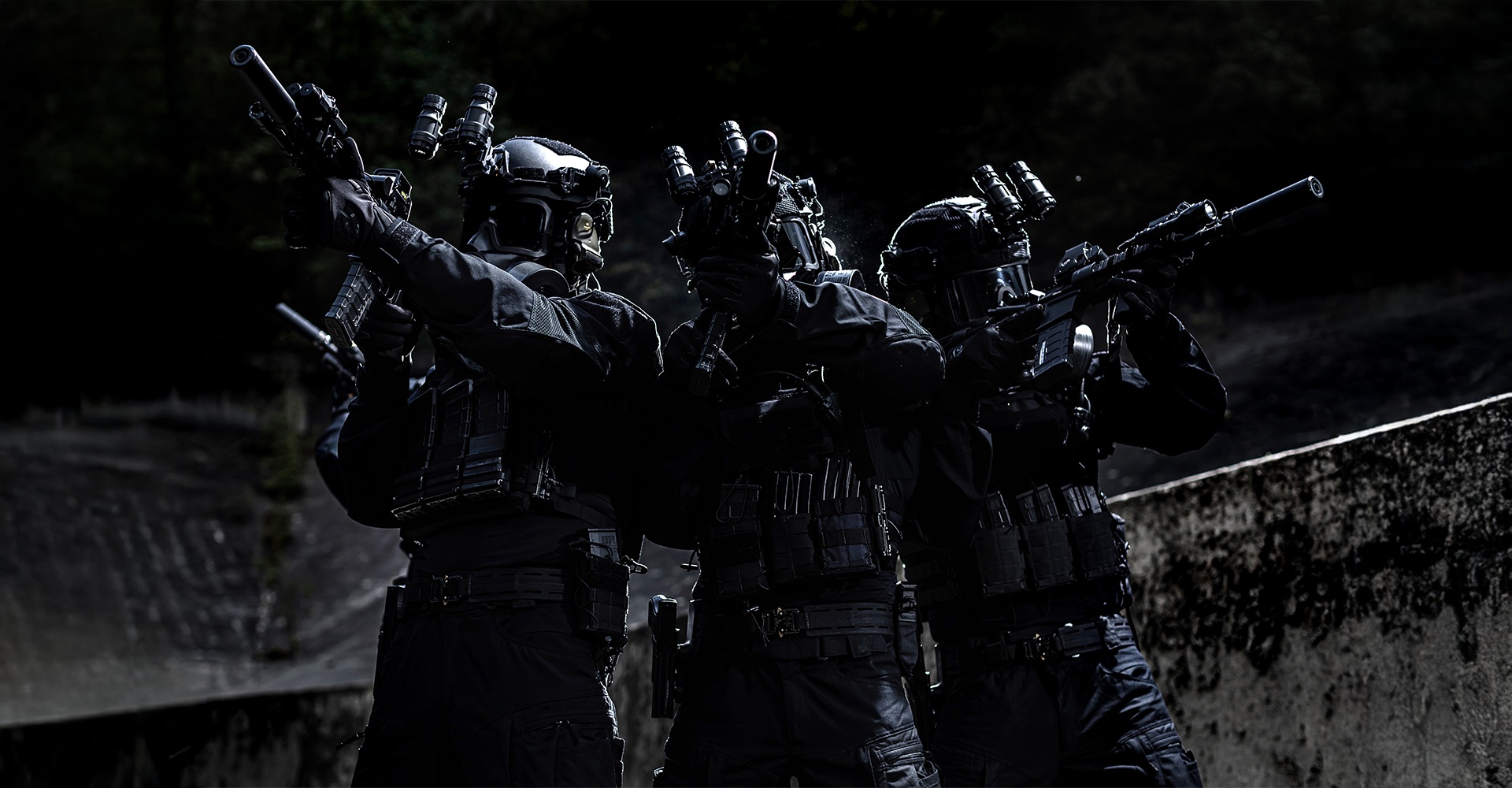
Layering balances concealment with breathability and mobility, though managing heat signatures can affect temperature regulation — requiring careful planning.
Thermal signature management, combined with visual camouflage and positioning, is the third pillar of concealment, especially against UAVs or sensor-equipped foes.
To explore how thermal imaging works, read our blog: Thermal Imaging & Stealth Tactics
Concamo: Confusion as a Tactical Advantage
Concamo is short for “confusion camouflage” and takes a radically different approach to concealment. Instead of relying solely on environmental blending, it’s built to exploit the limitations of human perception. The goal isn’t just to hide, but to create visual overload that prevents quick identification.
At the heart of Concamo’s effectiveness is how it interacts with the brain under stress. When a human scans an area for threats, the brain is looking for recognizable outlines and patterns — especially the human form. Concamo is specifically designed to interrupt that process. It uses layered fractal geometry, organic shapes, and natural color tones to create a pattern so visually complex that the brain struggles to decode what it's seeing.
The result is what could be described as a cognitive “stall.” The observer might detect movement or texture, but their brain takes longer to classify it as a threat, buying valuable time for the concealed operator. This is especially effective in low-light environments, peripheral vision, or fast-paced situations where every second counts.
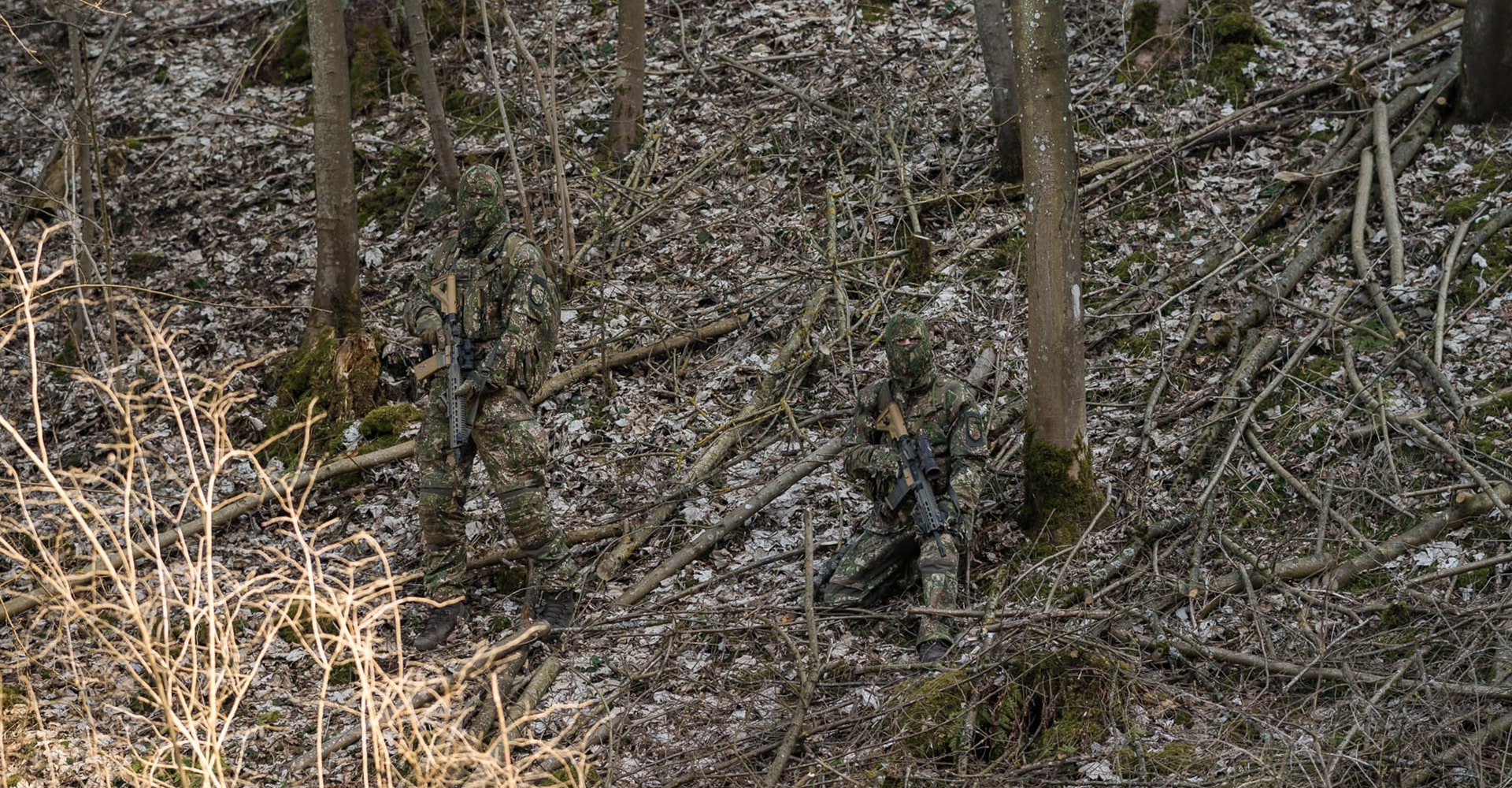
Unlike traditional camouflage, Concamo doesn’t aim for realism or direct mimicry of a specific terrain. Instead, it leverages visual chaos and perceptual trickery — the kind naturally found in forests, brush, or rubble — to disappear in plain sight by overwhelming the senses.
Field reports and testing have shown that Concamo performs consistently across various terrains, distances, and light levels, often outperforming more conventional patterns that rely solely on matching background textures.
Want to see how confusion becomes camouflage? Discover the science behind Concamo and how it rewrites the rules of concealment here: Concamo: The Confusion Camouflage
What Makes Camouflage Work in the Field
Not all camouflage is equal. Success depends on design, materials, and adaptability.
- Purpose-Driven Design: Targeting the human eye and sensors, effective patterns disrupt outlines at multiple distances using macro/micro shapes, fractal geometry, and thoughtful color choices. What looks good in photos may fail in real world, changing conditions.
- Material Performance: Appearance alone isn’t enough. Fabrics must be durable, quiet, and resistant to wear, while minimizing infrared and thermal signatures. Many patterns fail because materials degrade or reflect heat or light.
- Environmental Adaptability: Battlefields change fast — from dense forests to urban rubble and deserts. Effective camouflage conceals across varied environments without constant gear changes. Versatile patterns and materials keep operators hidden whether moving or stationary, in light or shadow.
- Advanced Perception Countermeasures: Some patterns go beyond blending. Technologies like Concamo confuse the brain’s threat detection, delaying recognition. Static patterns often fail when operators move or face sensor-equipped adversaries.
In short, effective tactical camouflage combines tactical insight, material innovation, and real-world testing. The difference between success and failure is the difference between being seen and staying unseen.
Conclusion
Camouflage has evolved into a complex, multi-layered discipline blending visual disruption, thermal management, and perceptual tactics. From classic military patterns to advanced designs like Concamo, concealment today is about staying ahead of every threat, whether human or machine.
Still want more?

